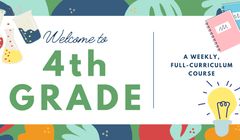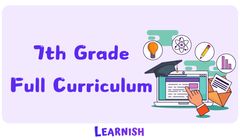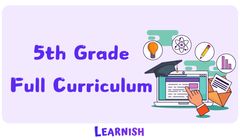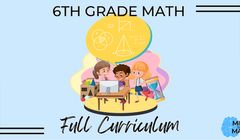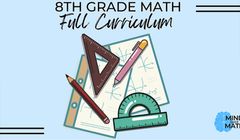What’s the best online homeschool curriculum for your family?
Easy tasks for tackling the online homeschool curriculum selection process. How to identify what makes a curriculum a good fit for your family.
A quick guide on how to vet and select an online homeschool curriculum that meets your needs
We all know Covid changed our world. One silver lining that emerged from the challenges of the last few years is there are many more online homeschooling classes and curriculum options available.
These online programs are engaging, designed for all ages, and are easy to use on your choice of laptop, mobile phone, or tablet. But of course, more options means more decisions. Sorting through analog and online curriculum choices and making an educated decision about what’s best for your unique family can feel quite daunting.
So if you’re feeling overwhelmed, keep reading. We are here to support you as you start to homeschool. With the right prep, we know it will be a beautiful experience.
This article breaks down the online homeschool curriculum selection process into easy tasks to make it more manageable and help you identify what makes a curriculum a good fit for your family.
Easy tasks to choose your online homeschool curriculum
Task 1: Develop your plan
Identify learning goals for your students
A good starting place for selecting an online homeschool curriculum is to write out the learning goals you have for your students. Some examples of learning goals are:
Understanding fractions and decimals
Mastering narrative writing
Or developing a plan for a neighborhood improvement project
It can be helpful to write these goals out and review them with your learners. It will help you get excited about what you plan to learn and accomplish in your homeschooling.
Understand state laws governing homeschooling
Another vital part of your selection process is researching your state’s legal requirements. These requirements may impact your options, and we recommend developing a solid legal understanding of them.
You can use HSLDA, a nonprofit organization that provides resources, including homeschool laws by state. Some items you will need to understand are whether testing is required and what type of record-keeping is necessary.
Identify your children’s learning styles
You are well-equipped to teach your children because you know them best. Learners come in all shapes and sizes, with different learning preferences (auditory vs. visual) and interests. It’s a good idea to consider your learners’ preferences and learning styles when researching online curriculum options.
No research-based evidence supports the idea that matching activities to one’s learning style improves learning.
However, it can still be helpful to understand what your kids prefer to make your homeschool experience more positive. The categories of learning styles often include:
Visual: Learners engage well with information when they can visualize relationships and ideas. Using charts, maps, and graphs can work well for these learners.
Auditory: Learners often prefer listening to information rather than reading it or seeing it visually displayed.
Reading and writing: Reading and writing learners prefer to engage by reading texts and can further understand information by summarizing.
Kinesthetic (or hands-on): Kinesthetic learners learn best by doing and may get fidgety if forced to sit for long periods.
Connect with other homeschooling families
Reaching out to experienced homeschool families in your community or via social networks is a great way to get the inside scoop. You can get recommendations for online homeschool curricula and ideas for making the best choices. Bonus, this can also provide opportunities for your learners to socialize with other homeschoolers.
Task 2: Identify what matters to you in choosing an online homeschool curriculum
Determine learning priorities
Ask yourself what is most important for your kids to learn in your homeschool. It’s helpful to make a list, so you can identify your wishes and prioritize them. Do you want your children to have strong academic skills, cultivate a love of learning, develop tech skills, become leaders, or all of these?
Setting these goals can help guide your selection process for an online homeschool curriculum.
Establish your teaching style
What teaching style do you want to use in your homeschool? A few key questions you can answer to help guide this decision are:
How much time do you have to spend teaching?
How much time do you want your kids to spend on screens using their online curriculum?
Given your other responsibilities, how much independent study do you expect or need?
Do you want to use an online curriculum that contains a pacing guide and allows you to plan or one that is more flexible and can be personalized?
Answering these questions will help you develop your instructional vision. This vision is a critical lens when you are selecting the online curriculum you plan to use with your homeschoolers.
Check out this inspiring article by a homeschooling mom about how homeschooling works for her and her family.
Decide on your online homeschooling method
You are looking for an online homeschool curriculum. As you think about how you want to use your online curriculum, think about how you want to operate your homeschool environment.
How much time do you want your students to interact with the online homeschool curriculum on screen?
There are many approaches to homeschooling–the list below contains some of the most popular methods. There is no right or wrong way to homeschool. The beauty is you get to select or mix and match the strategies that work best for you and your family.
Traditional homeschooling
You want your homeschool to feel like a traditional school with a more familiar sequenced core curriculum. Many online homeschool curriculum programs support this conventional approach. Sometimes this is a good fit when trying out homeschooling.
Classical homeschooling
You prefer the classical approach to education and want to base your instruction on the classical styles of Greek and Roman. This approach includes a focus on grammar, logic, and rhetoric.
Unit study homeschooling
You prefer to use a method where students learn about a topic across subjects. For example, if you want to teach a unit about World War II, you can introduce fiction or non-fiction books for English and social studies. You could also apply math problems that address challenges from that time and scientific approaches that solved problems for different armies.
Unschooling homeschooling
Unschooling uses a learner-centered approach but is unique because it’s not driven by a curriculum. There’s generally no schedule, and this model supports a flexible approach to learning that is student-driven.
Pre-packaged homeschooling approach
You prefer to teach with a core online curriculum that includes tools for record-keeping. There are many of these options for online homeschool curricula. These programs are helpful if you have less time in your schedule.
You have done the work of Tasks 1 and 2 to understand what you want your children to learn and how you want to teach. Now you’re ready to go onto Task 3 and start reviewing your online homeschool curriculum options.
Task 3: Curate your choices for an online homeschool curriculum
There are many choices when it comes to choosing an online homeschool curriculum. Use the lists you developed on learning outcomes, teaching style, and homeschool method to guide you in the process. There are other essential things to consider:
Cost: How much do you have to spend on the curriculum?
Time: How much time do you have to plan, prep, and teach?
Screen Time: How much time do you ideally want your students to spend on their devices using an online homeschool curriculum?
Combining Learners: Can you merge teaching your kids certain subjects, or do you need to teach them independently?
Beliefs
Do your philosophical or religious beliefs influence how you want to homeschool?
Alignment to state standards
If your goals include college/university after homeschooling, you will want to consider alignment with state standards. Your kids will need to master the necessary content to apply to college.
The options are endless for an online curriculum, and it can be overwhelming. A good place to start your research into the available options that match your approach and teaching style is Cathy Duffy Reviews.
These reviews offer many filters that can help make your search process more manageable, including a key one that will only show online options.
It’s good to know that the cost of online homeschooling programs varies significantly, depending on the curriculum, interactivity, and level of support. Some online homeschooling curriculums are free, while others require a paid monthly or yearly fee or charge a flat rate per class.
One easy way to try some online classes is through Outschool’s affordable online homeschooling courses. Trying different online class types, topics, and formats can help you figure out what works best for your family and outsource some of your teaching. Check out our guide to homeschooling to learn more.
Once you create a list of online curriculum options that could be good for your homeschool, you can chat with other homeschool families to get references or recommendations on the items on your list.
You can visit Facebook homeschool communities and ask questions about your possible choices. There are styles to fit every learner, and the fun part is researching and coming up with exciting options.
Task 4: Sample online homeschool curriculum options
Now that you have narrowed down a list of options from your research, conversations, and social interactions, it’s time to sample some curriculum.
We recommend you reach out to digital or online curriculum publishers or visit their websites and request or download samples.
Once you receive your samples, it’s a good idea to double-check:
Cost
Amount of required teacher prep time and planning
Appropriate grade levels/ages
Amount of screen time required
Philosophical method (secular or religious)
Alignment to state standards
Approach to cultural relevance
You can check out online options like Outschool to help supplement your homeschooling or be the core of your homeschooling, including semester-long classes, 1:1 tutoring, and more.
Task 5: Make a decision about your online homeschool curriculum
You have done the hard work and the research to develop a list of online options that fit your needs. You have reviewed samples of the possible options.
Now it is time to make a decision.
You can review your finalists with your kids and make a joint decision. It’s a fun way to increase their excitement for their upcoming homeschooling. Review any feedback you received from other parents or homeschool social communities.
Consider how much work each option will require from you and if it matches the priorities you established in Task 2 for your learners. And then, make a decision and purchase your curriculum. There are high-quality options that are offered for free or low-cost, including Outschool.
Task 6: Get started teaching with your selected online homeschool curriculum
The moment has arrived for you to start teaching with your new online/digital curriculum.
We hope these Tasks have been helpful. If you’re feeling overwhelmed, connecting with other homeschooling parents is an excellent next step, no amount of research or reading takes the place of people you can ask questions and learn from.
If you’re getting ready to transition from traditional schooling to homeschooling, you might also like this guide to deschooling and 10 steps to start your homeschool journey.
You don’t have to homeschool alone – Outschool is here to help. Let’s learn together.

Topics Related to Full Curriculum
Similar Full Curriculum articles
Full Curriculum classes


